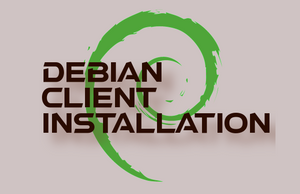Let's install Debian 11 as a virtual machine. I'll be using KVM as my virtualization platform and installing Debian with the Gnome desktop. This will result in a nice, point-and-click, client workstation.
🖥️
Ready the Virtual Machine
- Install a virtualization platform. I'll be using KVM, but you might opt for VirtualBox or others. That's up to you!
- Download Debian. You can get the Debian OS from this link. Typically, for an installation to a virtual machine, you will want the amd64 version of the ISO. Note that if you download a "Net" install version of an ISO then you will need an Internet connection—preferably broadband.
- Create a virtual machine. Now, open your virtualization platform and create a virtual machine. Be sure to specify the .iso image of Debian that you downloaded previously.
⚠️
As of the writing of this article, VirtualBox will automatically install Debian 11 when you finish creating the virtual machine. You don't have to lift a finger! It will ultimately bring you to a login screen showing the user vboxuser. The password for this is changeme. Be sure to change the password right away! BTW, the root password is also changeme.
If the installation is not automated, continue to the step-by-step procedure below.
If the installation is not automated, continue to the step-by-step procedure below.
VIDEO
Check out the video below for a hands-on demonstration of a Debian installation into a virtual machine. Read ahead for the written step-by-step procedure.
Install Debian!
🗒️
This is an installation of Debian 11 (known as Bullseye).
- Double-click the virtual machine to begin the installation. The system should locate the Debian ISO image and attempt to boot off of it.
- The first thing you will see is a menu screen. Select Graphical Install to use your mouse. If you like to work with the keyboard only, select Install.
- Select your language. In the video I use English. Then click Continue.
- Select your location. For example United States, then click Continue.
- Select your keyboard layout and click Continue. That should automatically detect hardware and attempt to obtain an IP address automatically from a DHCP server on the network (or within your virtualization program).
- Enter a hostname for the system. For example, debian-11-client. Click Continue.
- (Optional) Enter a domain name if you need to, then click Continue.
- Set up a root password. This is the main administrative account in Linux so be sure to set a lengthy and complex password. Type it, confirm it, make a note of it, and click Continue.
- Create a user account. This will be the main account that you log in to Linux with. Pick a Full Name and then a username that makes you all giddy inside! Click Continue.
- Configure a complex password for the user account, confirm it, and click Continue.
- Select your time zone and click Continue.
- Partition Disks. Here you can have the system partition your drives for you or you can do it manually. For the purposes of a virtual machine, we can simply select: Guided - use entire disk and click Continue.
- Select the only virtual disk (VDA) listed and click Continue.
- Now, decide on your partitions. For the purposes of this virtual machine, select All files in one partition. (Note that actual physical systems such as servers would often have at least the /home partition separate, and possibly on another drive.) Click Continue.
- On the next screen select Finish partitioning and write changes to disk. Then, on the following screen, select Yes to write the changes to the disks and click Continue. That will then install the base system.
- When it asks if you wish to scan more media, select No, then click Continue.
- Select a Debian archive that is near to you. For example, I select United States, and then deb.debian.org. However, your choice might differ! Click Continue.
- Enter a proxy server if necessary. If you are not sure, then you probably don't have one. Click Continue. Now, Debian will configure APT, and move on to the software selection options.
- Enable or disable popularity contest. For our virtual machine, we will select No and click Continue.
- Now, select the desktop environment that you want. Unless you want a different desktop, select Debian desktop environment and Gnome. (Note, if you want SSH capabilities, select that too.) Then click Continue. Now, Debian will install over a thousand packages. This may take a while! Multi-task!
(Note: If you wanted a true Debian "server", then this is where you would accomplish it—by deselecting all desktop environments.) - Click Yes for the GRUB boot loader (in most cases you want this on your primary drive) and click Continue.
- Select the only drive available to you. In the case of a virtual machine, it might show /dev/vda. Click Continue.
- The installation should now be complete. Click Continue to reboot the system.
🙂
YES! Debian is now installed. Login, and have fun!

